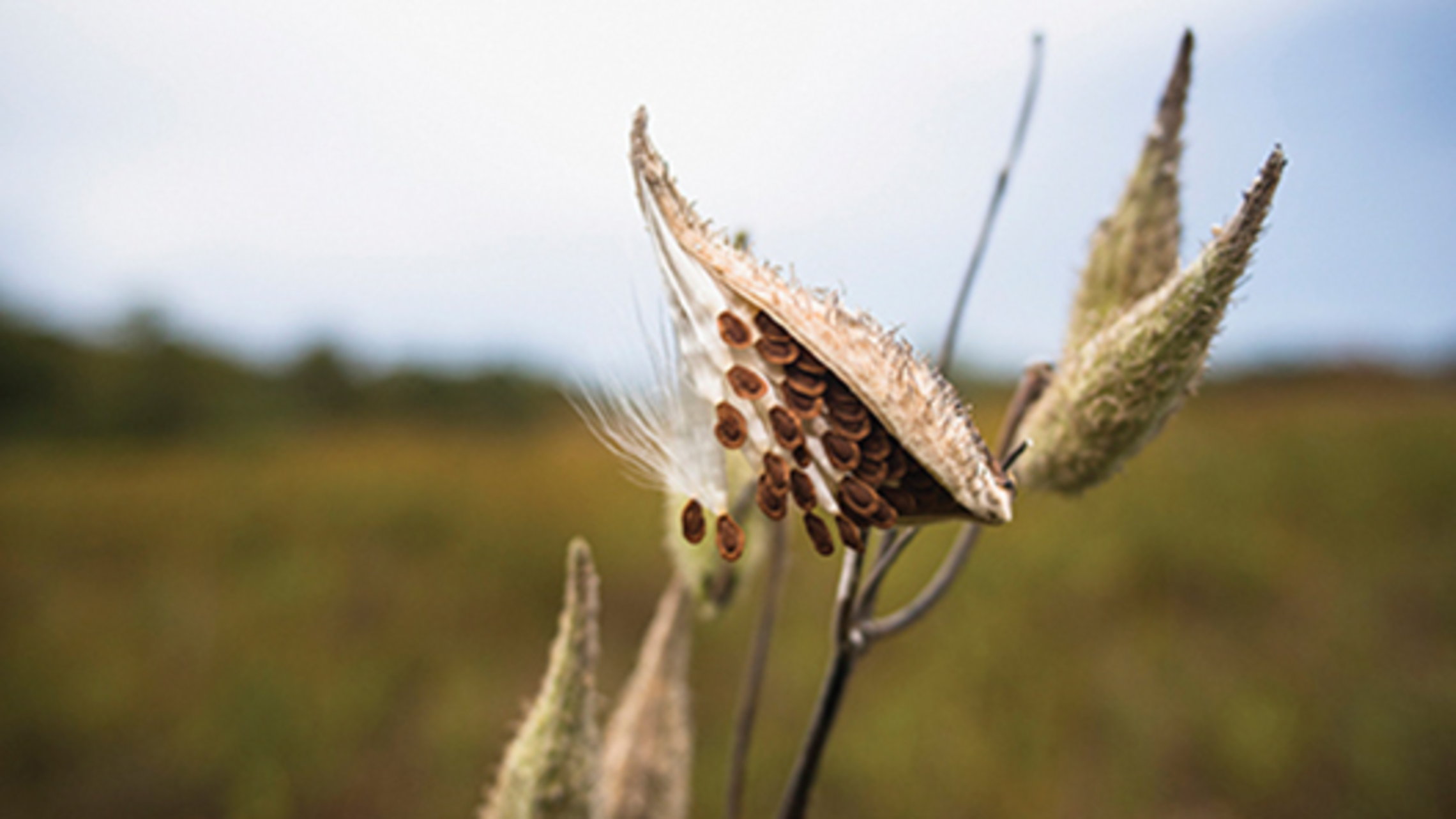Five steps to harvest milkweed seeds this fall

However small, every step taken to plant more milkweed is a step in the right direction
Fall is right around the corner, so it’s time to think about the steps for harvesting milkweed seed.
Milkweed is the essential plant for the monarch butterfly life cycle and the sole food source for the monarch caterpillar. It has become less common over the years, primarily due to habitat loss. As abundant fields and meadows have turned into parking lots and developments, the places where milkweed grew naturally has disappeared, leading to the decrease in the monarch butterfly population.
Following these steps to harvest milkweed seeds is a great way to give monarch caterpillars more of the only food source they so desperately need. Follow the simple steps below, and you will have plenty of milkweed seeds for spring.
- Identify: To identify milkweed, use the simple test of snapping off a leaf from the milkweed plant, and a white, paint-like liquid should appear. It’s called latex, and it really does look like white latex paint. However, don’t touch it. The foam is a skin irritant, so be sure to wear gloves.
- You can also visit MonarchMilkweedHabitat.com to find images of milkweed native to your state. This will make it easier when searching your meadows, ditches and fields.
- Test: The best way to tell if the seeds are mature is to exert slight pressure on the pod. It will split open and reveal dark brown seeds. If the seeds are green or light brown, then they are not ready to be harvested. Leave the pod on for a few more days and check back again.
- Pluck: Once the seeds are mature, pluck the entire seed pod off the plant. You can either store the entire pod in a paper bag for the winter or remove the white fluff right away.
- De-fluff: You can separate the fluff from the seeds simply by emptying the contents of the pod into a paper bag or container. Drop in a couple pennies and shake the bag. The pennies help separate the fluff from the seeds easily. Otherwise, depending on how many pods you’ve collected, you can pull the fluff from each individual seed.
- Store: The seeds should be stored in a cool place, such as a refrigerator, so they can stratify over the winter and be ready to plant for spring.
With your help, monarch butterflies will have more milkweed plants to lay their eggs in the coming years. To get more information about milkweed and monarch butterflies, visit MonarchChallenge.com.
For more information on this topic, including requests for imagery, quotes and bylined articles, or to conduct further interviews, contact Katie Mickschl at kmickschl@periscope.com. Please feel free to utilize these articles in their current form.
About BASF’s Agricultural Solutions division
With a rapidly growing population, the world is increasingly dependent on our ability to develop and maintain sustainable agriculture and healthy environments. Working with farmers, agricultural professionals, pest management experts and others, it is our role to help make this possible. That’s why we invest in a strong R&D pipeline and broad portfolio, including seeds and traits, chemical and biological crop protection, soil management, plant health, pest control and digital farming. With expert teams in the lab, field, office and in production, we connect innovative thinking and down-to-earth action to create real world ideas that work — for farmers, society and the planet. In 2018, our division generated sales of €6.2 billion. For more information, please visit www.agriculture.basf.com or any of our social media channels.
About BASF
At BASF, we create chemistry for a sustainable future. We combine economic success with environmental protection and social responsibility. The approximately 122,000 employees in the BASF Group work on contributing to the success of our customers in nearly all sectors and almost every country in the world. Our portfolio is organized into six segments: Chemicals, Materials, Industrial Solutions, Surface Technologies, Nutrition & Care and Agricultural Solutions. BASF generated sales of around €63 billion in 2018. BASF shares are traded on the stock exchange in Frankfurt (BAS) and as American Depositary Receipts (BASFY) in the U.S. Further information at www.basf.com.
